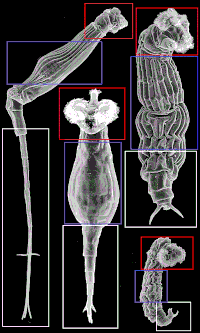
Asexual reproduction is a type of reproduction that does not involve the fusion of gametes or change in the number of chromosomes. The offspring that arise by asexual reproduction from either unicellular or multicellular organisms inherit the full set of genes of their single parent and thus the newly created individual is genetically and physically similar to the parent or an exact clone of the parent. Asexual reproduction is the primary form of reproduction for single-celled organisms such as archaea and bacteria. Many eukaryotic organisms including plants, animals, and fungi can also reproduce asexually. In vertebrates, the most common form of asexual reproduction is parthenogenesis, which is typically used as an alternative to sexual reproduction in times when reproductive opportunities are limited. Komodo dragons and some monitor lizards can reproduce asexually.

Acanthocephala is a group of parasitic worms known as acanthocephalans, thorny-headed worms, or spiny-headed worms, characterized by the presence of an eversible proboscis, armed with spines, which it uses to pierce and hold the gut wall of its host. Acanthocephalans have complex life cycles, involving at least two hosts, which may include invertebrates, fish, amphibians, birds, and mammals. About 1420 species have been described.

The rotifers, commonly called wheel animals or wheel animalcules, make up a phylum of microscopic and near-microscopic pseudocoelomate animals.
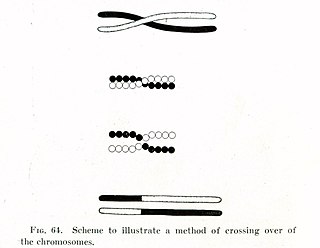
In evolutionary genetics, Muller's ratchet is a process which, in the absence of recombination, results in an accumulation of irreversible deleterious mutations. This happens because in the absence of recombination, and assuming reverse mutations are rare, offspring bear at least as much mutational load as their parents. Muller proposed this mechanism as one reason why sexual reproduction may be favored over asexual reproduction, as sexual organisms benefit from recombination and consequent elimination of deleterious mutations. The negative effect of accumulating irreversible deleterious mutations may not be prevalent in organisms which, while they reproduce asexually, also undergo other forms of recombination. This effect has also been observed in those regions of the genomes of sexual organisms that do not undergo recombination.
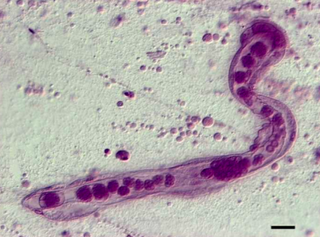
Dicyemida, also known as Rhombozoa, is a phylum of tiny parasites that live in the renal appendages of cephalopods.

Matthew Stanley Meselson is a geneticist and molecular biologist currently at Harvard University, known for his demonstration, with Franklin Stahl, of semi-conservative DNA replication. After completing his Ph.D. under Linus Pauling at the California Institute of Technology, Meselson became a Professor at Harvard University in 1960, where he has remained, today, as Thomas Dudley Cabot Professor of the Natural Sciences.

Cryptobiosis or anabiosis is a metabolic state in extremophilic organisms in response to adverse environmental conditions such as desiccation, freezing, and oxygen deficiency. In the cryptobiotic state, all measurable metabolic processes stop, preventing reproduction, development, and repair. When environmental conditions return to being hospitable, the organism will return to its metabolic state of life as it was prior to cryptobiosis.
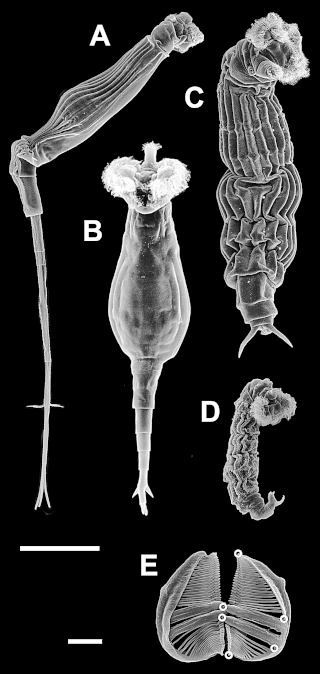
Rotaria is a genus of asexual, microscopic animal known as a bdelloid rotifer. Analysis published in 2007 of morphology and DNA sequence data of species from the genus confirmed that despite their asexual mechanism of reproduction, two fundamental properties of species, independent evolution and ecological divergence by natural selection occurred. This demonstrates that sex is not a necessary condition for speciation.

Brachionus is a genus of planktonic rotifers occurring in freshwater, alkaline and brackish water.
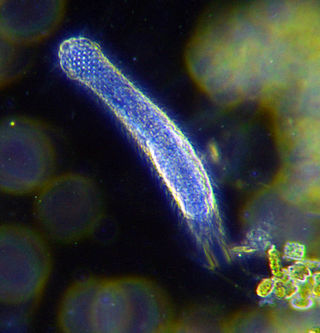
Eutelic organisms have a fixed number of somatic cells when they reach maturity, the exact number being relatively constant for any one species. This phenomenon is also referred to as cell constancy. Development proceeds by cell division until maturity; further growth occurs via cell enlargement only. This growth is known as auxetic growth. It is shown by members of the now obsolete phylum Aschelminthes. In some cases, individual organs show eutelic properties while the organism itself does not.
Osmoprotectants or compatible solutes are small organic molecules with neutral charge and low toxicity at high concentrations that act as osmolytes and help organisms survive extreme osmotic stress. Osmoprotectants can be placed in three chemical classes: betaines and associated molecules, sugars and polyols, and amino acids. These molecules accumulate in cells and balance the osmotic difference between the cell's surroundings and the cytosol. In plants, their accumulation can increase survival during stresses such as drought. In extreme cases, such as in bdelloid rotifers, tardigrades, brine shrimp, and nematodes, these molecules can allow cells to survive being completely dried out and let them enter a state of suspended animation called cryptobiosis.

Tardigrades, known colloquially as water bears or moss piglets, are a phylum of eight-legged segmented micro-animals. They were first described by the German zoologist Johann August Ephraim Goeze in 1773, who called them Kleiner Wasserbär. In 1777, the Italian biologist Lazzaro Spallanzani named them Tardigrada, which means "slow steppers".

Syndermata is a clade of animals that, in some systems, is considered synonymous with Rotifera. Older systems separate Rotifera and Acanthocephala as different phyla, and group them both under Syndermata. This clade is placed in the Platyzoa.

Brachionus plicatilis is a euryhaline rotifer in the family Brachionidae, and is possibly the only commercially important rotifer, being raised in the aquaculture industry as food for fish larvae. It has a broad distribution in salt lakes around the world and has become a model system for studies in ecology and evolution.

Gnathifera is a clade of generally small spiralians characterized by complex jaws made of chitin. It comprises the phyla Gnathostomulida, Rotifera and Micrognathozoa. Chaetognatha has recently been recognised as closely related to the group, with it either being included within Gnathifera or the broader group Chaetognathifera. It may also include the Cycliophora.

Volvox carteri is a species of colonial green algae in the order Volvocales. The V. carteri life cycle includes a sexual phase and an asexual phase. V. carteri forms small spherical colonies, or coenobia, of 2000–6000 Chlamydomonas-type somatic cells and 12–16 large, potentially immortal reproductive cells called gonidia. While vegetative, male and female colonies are indistinguishable; however, in the sexual phase, females produce 35-45 eggs and males produce up to 50 sperm packets with 64 or 128 sperm each.
Adineta ricciae is a species of freshwater rotifers in the family Adinetidae. It was first described in 2005 after being discovered by chance in dry mud beside a billabong in Australia. It is used as a model organism as it is easy to keep in culture.

Xenacoelomorpha is a small phylum of bilaterian invertebrate animals, consisting of two sister groups: xenoturbellids and acoelomorphs. This new phylum was named in February 2011 and suggested based on morphological synapomorphies, which was then confirmed by phylogenomic analyses of molecular data.

Synchaeta is a genus of rotifers belonging to the family Synchaetidae.
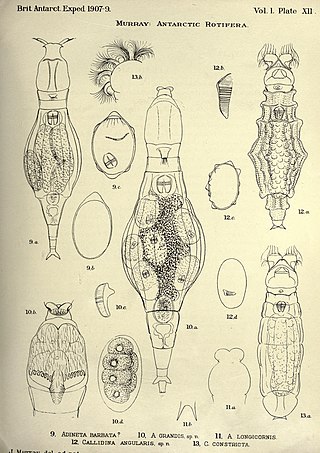
Adineta is a genus of rotifers belonging to the family Adinetidae.


